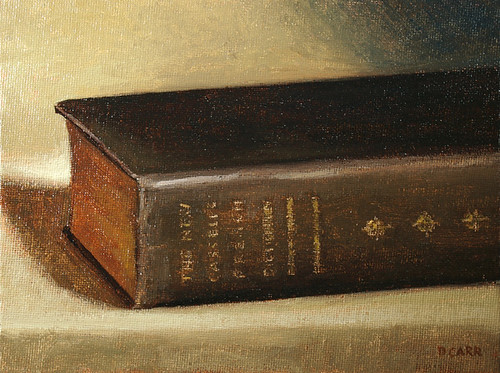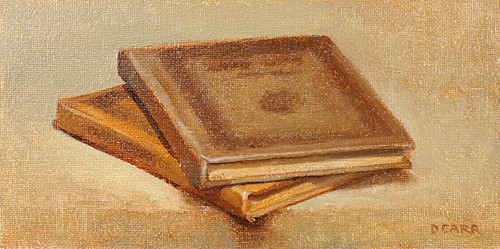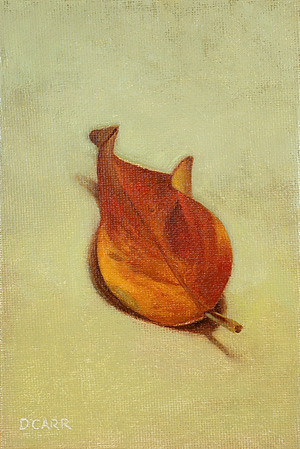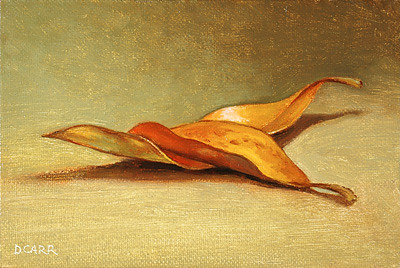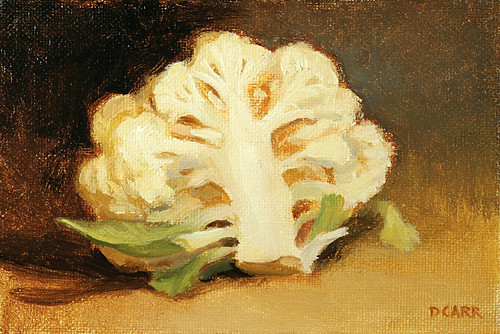Saturday, September 22, 2007
Cassell's French Dictionary
Posted by
Dan P. Carr
at
9:49 AM
0
comments
![]()
Tags: books, daily life, daily painting
Friday, September 21, 2007
Old English books #2
Posted by
Dan P. Carr
at
11:46 AM
0
comments
![]()
Tags: books, daily painting, Old English
Thursday, September 20, 2007
Magnolia leaf
Posted by
Dan P. Carr
at
9:26 AM
0
comments
![]()
Tags: botanical, daily painting, nature
Wednesday, September 19, 2007
Work in progress: Leslie

9/18: Leslie, oil on canvas, 16x20 in.
This year and last I found the motivation to at least start a few paintings of family members from digital photos. This is my sister-in-law Leslie and the reference photos I'm using were taken two(?) Christmases (or Thanksgivings?) ago. When I set the painting aside I had done just enough to grid and layout the image, and begin to mass in some local color and model the shirt sleeve. I'd been meaning to go back to this for a while, and decided last night to spend a couple hours and lighten the skin tones, adjust the color of the background stripes, and basically try to unify the colors overall with the colors on my palette currently. Also I painted over part of a table that was on the right. (The painting wasn't lit properly for this photo, so the upper corners are very bright.)
Posted by
Dan P. Carr
at
1:25 AM
0
comments
![]()
Tags: daily painting, portraits, work in progress
Tuesday, September 18, 2007
Magnolia leaves #2
Posted by
Dan P. Carr
at
1:00 PM
1 comments
![]()
Tags: botanical, daily painting, miscellanea, nature, Old English, riddles, words
Monday, September 17, 2007
Magnolia leaves
Posted by
Dan P. Carr
at
9:34 AM
0
comments
![]()
Tags: botanical, daily painting, nature
Sunday, September 16, 2007
Half a cauliflower
Posted by
Dan P. Carr
at
12:28 AM
2
comments
![]()
Tags: daily painting, food

